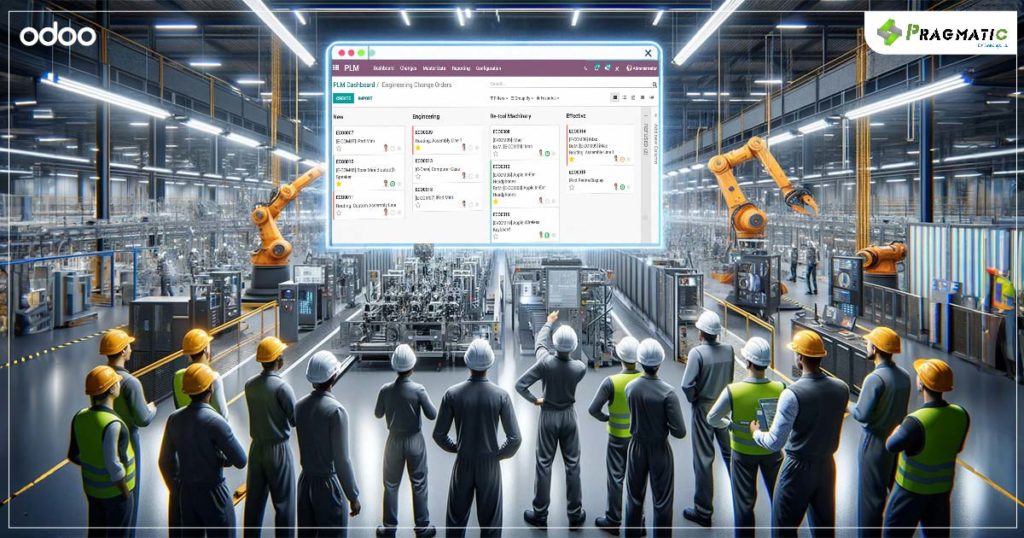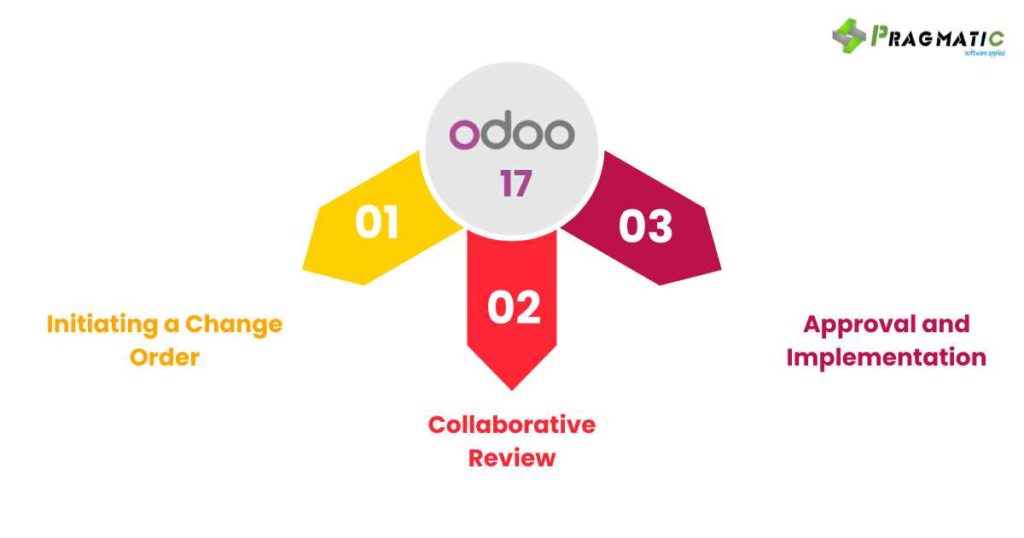

Rapid product development is crucial. But navigating the complexities of design, engineering, and manufacturing can be a slow and error-prone process.
Odoo 17 Product Lifecycle Management (PLM) is your key to streamlined product development and faster time to market.
This blog post focuses on the pivotal aspects of product iterations and updates within Odoo 17 PLM.
Understanding these processes is crucial for businesses aiming to streamline their product development cycles and stay ahead in competitive markets.
We’ll explore how Odoo 17 facilitates these processes, backed by a practical use case, to provide a comprehensive understanding of its capabilities.
The Essence of Product Iterations
Product iteration in Odoo 17 PLM refers to the process of making successive refinements and improvements to a product.
This involves revising designs, incorporating feedback and enhancing functionality.
Odoo 17 PLM streamlines this process through its integrated platform, which allows for seamless collaboration and efficient management of changes.

1) Initiating a Change Order
The process of implementing iterations in Odoo 17 PLM begins with the creation of an Engineering Change Order (ECO). This crucial step serves as the foundational document for proposing alterations to a product.
The ECO in Odoo 17 PLM is not just a formality; it’s a comprehensive tool for documenting every detail of the proposed changes.
This includes the rationale behind the changes, the specific alterations proposed and any potential impact on the existing product design. By initiating a change order, you’re essentially setting the stage for a well-organized and systematic approach to product modification.
2) Collaborative Review
Odoo 17 PLM facilitates a collaborative environment where team members can collectively discuss and refine the proposed changes. This step is vital for ensuring that all perspectives are considered and that the final decision on the changes is well-informed.
The platform’s collaborative tools allow for real-time communication, document sharing and feedback loops.
This inclusive approach ensures that each stakeholder, from designers to engineers to marketing professionals, contributes their expertise, leading to a more robust and efficient iteration process.
3) Approval and Implementation
The final step in the iteration process is the approval and implementation of the changes. After thorough review and collaborative refinement, the changes are finalized and need to be formally approved.
This might involve higher management or a dedicated review board within the organization. Once approval is granted, the changes are systematically integrated into the product design.
This marks the completion of one iteration cycle, paving the way for continuous improvement and evolution of the product in subsequent iterations.
1) Streamlining Product Updates
In Odoo 17 PLM, streamlining product updates is a critical aspect of maintaining a competitive edge in the market. Product updates can range from minor tweaks to significant overhauls, each aimed at enhancing product features or rectifying issues.
The importance of these updates lies in their ability to adapt products to changing market demands, technological advancements, or customer feedback.
Efficiently managing these updates ensures that the products remain relevant, functional, and appealing to customers, which is essential for sustained business success.
1) Identifying the Need for Updates
The first step in the update process is recognizing when an update is necessary. This is typically driven by customer feedback, market trends and competitive analysis.
Understanding the market and customer needs allows businesses to pinpoint exactly what changes are needed, whether it’s adding new features, improving existing ones, or fixing issues.
2) Managing Updates through ECOs
Similar to how iterations are managed, updates in Odoo 17 PLM are also handled through Engineering Change Orders. This approach ensures a structured process where each update is meticulously planned, documented, and tracked.
The ECOs serve as a formal record of what changes are being made, why they are needed, and how they will be implemented, thereby providing a clear roadmap for the update process.
3) Version Control
A crucial component of managing updates in Odoo 17 PLM is the version control system. This system allows for careful documentation of each update, ensuring that every change is recorded.
Version control is not just about keeping a history of changes; it’s a powerful tool for quality assurance. It enables the team to track the evolution of the product over time and if necessary, revert to previous versions.
This is particularly important in scenarios where an update may not perform as expected, allowing for a quick rollback to maintain product stability and functionality.
Let’s look at a use case : Implementing Iterations and Updates in a Tech Company
Consider a technology company developing a smart home device. The initial product launch was successful, but customer feedback highlighted areas for improvement.
Iteration : The company uses Odoo 17 PLM to initiate an ECO, gathering a team to refine the product’s design, enhancing its connectivity features based on customer feedback. The iterative process is documented and tracked through Odoo, ensuring a structured approach.
Update : After the iteration, a software bug is identified. The company quickly initiates an ECO for the update, collaborates on a fix and rolls out an updated software version, all managed seamlessly within Odoo 17 PLM.
At Pragmatic Techsoft, we excel in leveraging Odoo 17’s capabilities for our clients, ensuring successful implementation, customization, and migration.
Our expertise in Odoo 17 PLM, particularly in managing product iterations and updates, positions us as a leader in ERP solutions.
For more insights on maximizing the potential of Odoo 17 in your business, stay tuned to our blogs.
Ready to take your product development to the next level?
Let’s talk Odoo 17 PLM. Contact Pragmatic Techsoft today.
Leave a Reply
You must be logged in to post a comment.